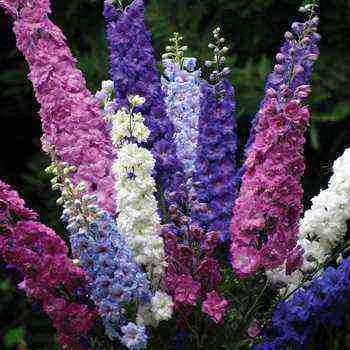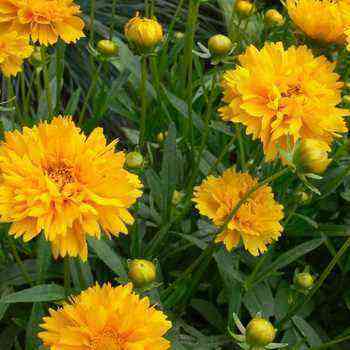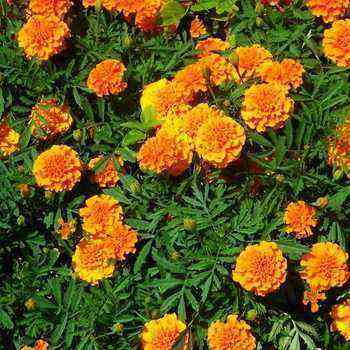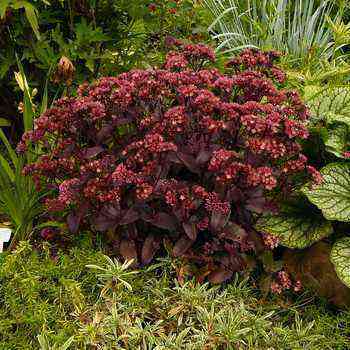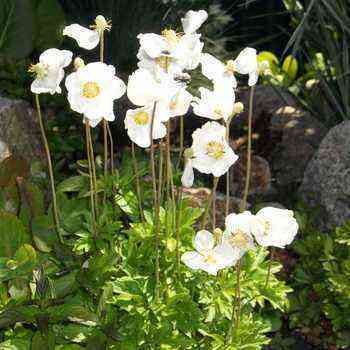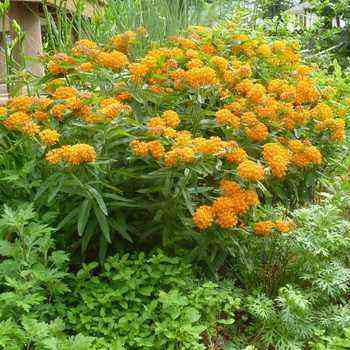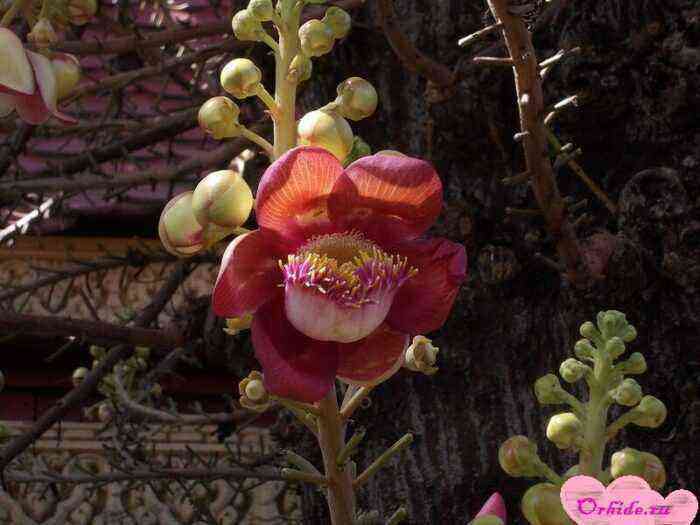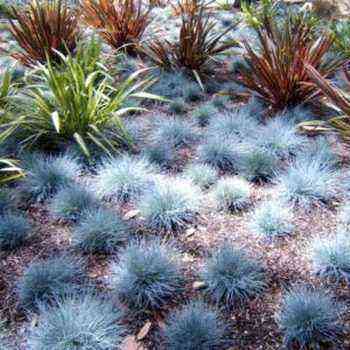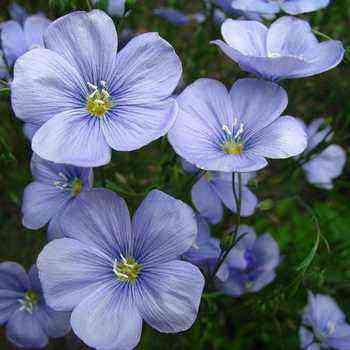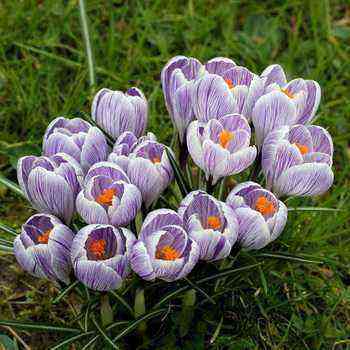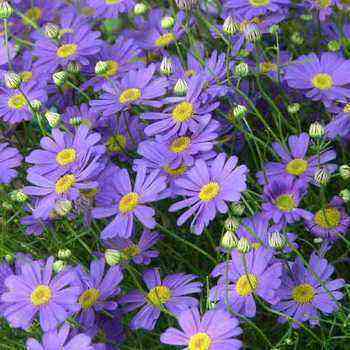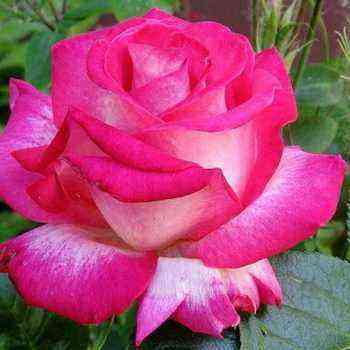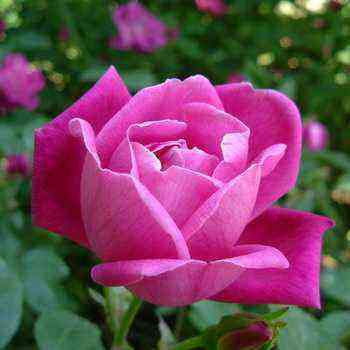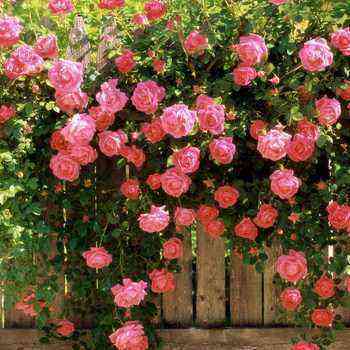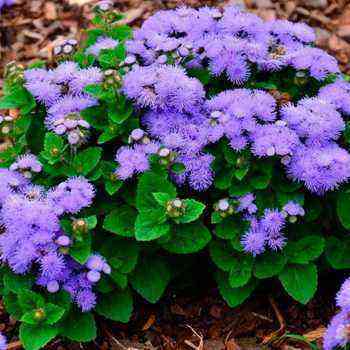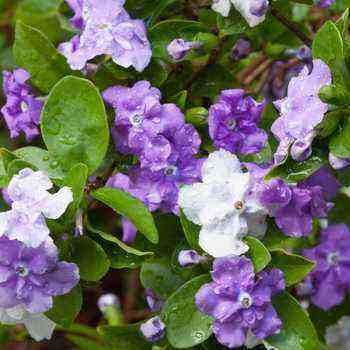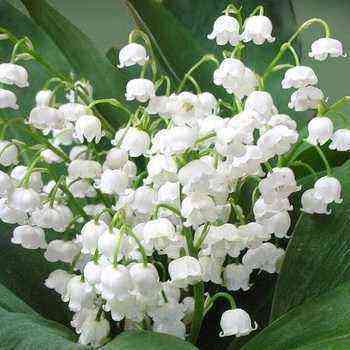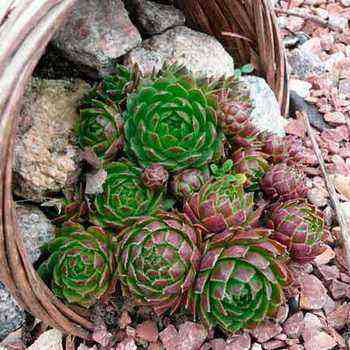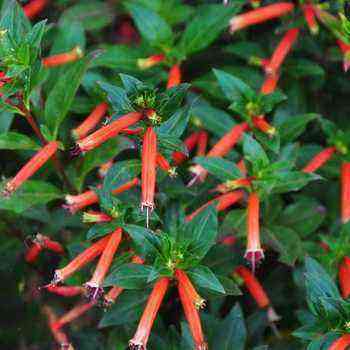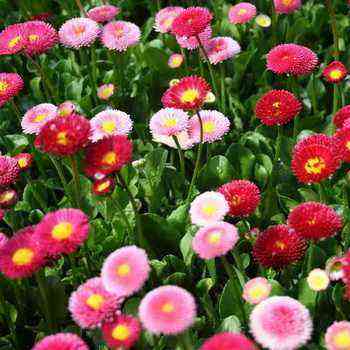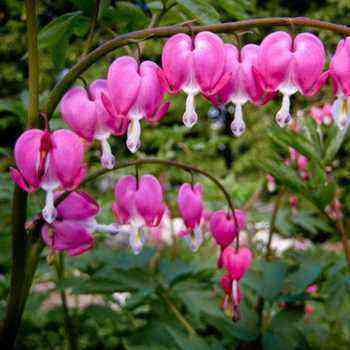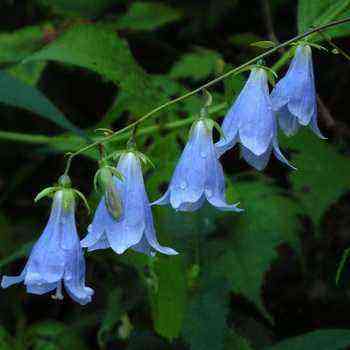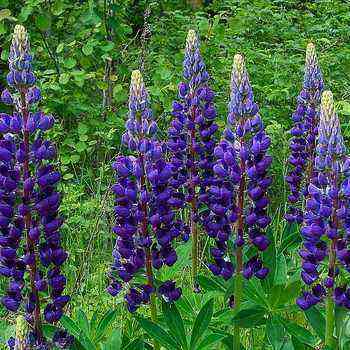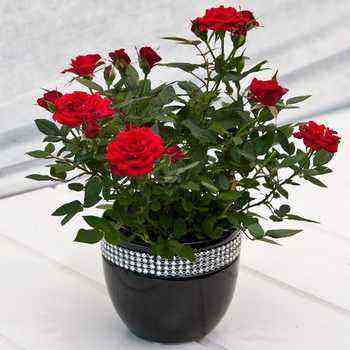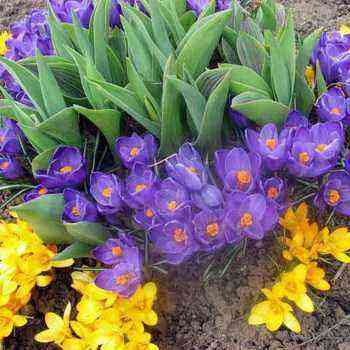 Everyone has their own preferences. Someone likes large inflorescences on tall stems, someone loves smaller and more tender plants. The indisputable choice in most cases is the violet; this flower has become popular for a long time. Most often it is presented in a flowerpot as a houseplant, but sometimes the inflorescence itself becomes an element of a beautiful bouquet.
Everyone has their own preferences. Someone likes large inflorescences on tall stems, someone loves smaller and more tender plants. The indisputable choice in most cases is the violet; this flower has become popular for a long time. Most often it is presented in a flowerpot as a houseplant, but sometimes the inflorescence itself becomes an element of a beautiful bouquet.
Many gardening enthusiasts exclusively grow pansies on their plots as an annual plant. At the same time, there are perennial species of these bright flowers that can decorate the garden for many years.
Perennial violets (Viola) are mostly May flowers, but they can please even earlier. Often violets “come” to the garden from the nearby forest, being proprietorily located in flower beds, rock crevices or under trees. The hand does not rise to weed out such natural self-seeding, and the charming creatures remain in the garden forever, already acquiring the name of the garden violet (or viola).
Look at the photo of what a perennial garden violet looks like, its leaves are arranged on the stem in the next order or collected in a root rosette:
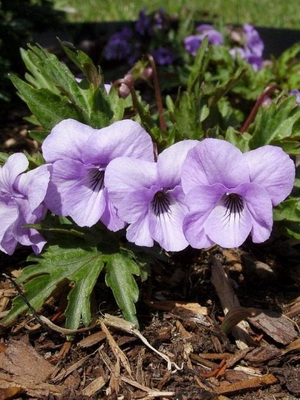

The flowers are usually blue, white, bright red and yellow.
In different countries, this flower has different names, since it has a wide geographical distribution, in Russia it is often called pansies.
Varieties and types of garden violets (pansies): photos, names and descriptions of perennial flowers
There are a great many violets that can be grown in the garden. They are conventionally divided into two groups: some have a horizontal spreading rhizome, while others have all the shoots growing from one root collar.
Among the existing flowers, the following varieties of garden violets can be distinguished:
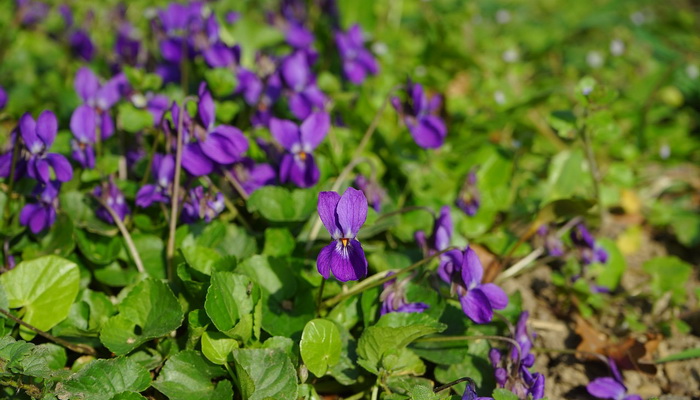
Scattering in different directions, the squat plants of the fragrant violet (V. odorata) bloom profusely in spring with purple flowers. This violet is the record holder for the speed of reproduction.

Violet’s sister (V. sororia) behaves more modestly: the jacket regains only 5-10 cm per year. How varied and large are its flowers!
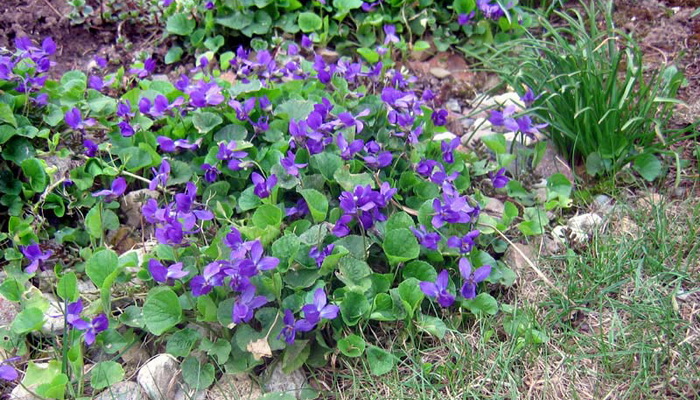
The stop-dividing violet (V. pedatifida) grows even more slowly . It is a delicate delicate species with leaves that look like small fans. The flowers are lilac, common to violets.
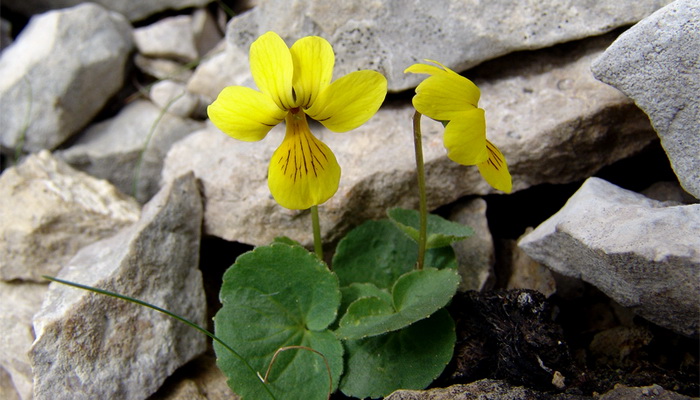
There are garden violet flowers suitable for rockeries, look at the photo – this is a charming plant with small bright yellow flowers, the Caucasian violet (V. caucasica) , like the previous species, has a creeping rhizome.

Violet labrador (V. labradorica) in terms of the conquest of territories can compete even with a fragrant one. Its seeds literally shoot out of the capsules. Self-seeding is very persistent.
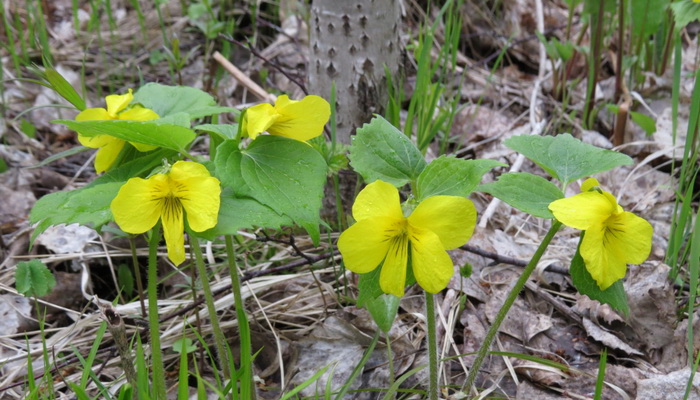
How does the trans-Ural violet one-flowered (V. uniflora) behave like an ephemeroid ? In spring it is a bush with large, original-shaped leaves and numerous sunny yellow flowers. From the middle of summer, the plant retires.
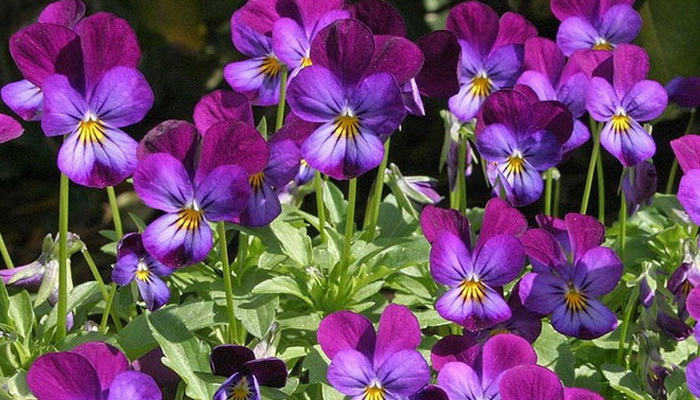
Horned violet (V. cornuta) . It is gentle in appearance, it overwinters with green leaves and even retains some buds. Violet blooms from snow to snow, although, of course, the first wave in May is the most violent.
Self-seeding gives an interesting variable color of flowers. But cultural varieties for some reason do not hibernate. They are probably of hybrid origin.
After reading the description of some varieties and types of garden violets, learn about the rules for growing them.
How to plant pansy plants outdoors
The easiest way to propagate viola is by division and cuttings. To do this, it is enough to cut off the leaf with the stem and put it in water until the root appears. It should be noted that even if the reproduction of the plant is not planned, then at least once every three years it must be removed from the soil and divided. Otherwise, due to overly dense growth, the flowers become small and may lose the features of the species.
In species with a horizontally creeping rhizome, a bush can be divided. This is done as follows: you need to moisten the soil well, remove the plant and divide it, disassembling it into full-fledged bushes. Then each plant separately in flowerpots or in open ground. This is done in the spring, before flowering, or in September.
In other species, you can separate the branches from the base of the bush and root them directly in the right place. Under the banks, cuttings of a fragrant horned violet take root in two to three weeks.
The second method of plant propagation is sowing fresh seeds in prepared soil in the fall. The freshness of the seeds plays a very important role in reproductive performance. The garden violet prefers a place in the sun for planting, because in the shade it is often attacked by slugs. Also, these pests parasitize the plant if it grows in a damp place.
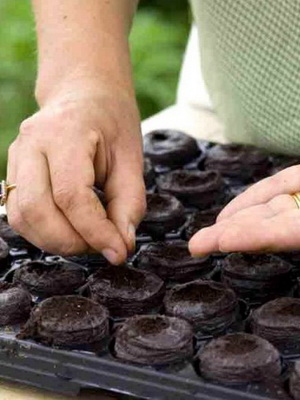

If a decision is made to plant plants by means of seeds, then you need to know what the planting and proper care of the garden violet should be. The seeds must be of good quality and the soil must be properly prepared. It is important to know that sandy soil is not particularly favorable for a perennial violet garden flower. Such soil needs to be improved with organic fertilizer, but not with humus, since it is aggressive to the soil and can burn the delicate roots of the plant.

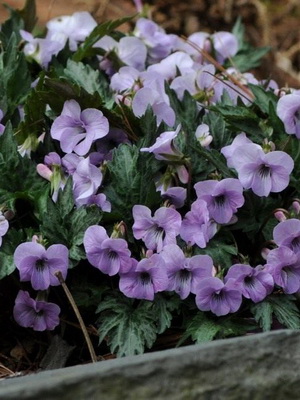
For perennial garden violets, timely and moderate watering remains an integral part of planting and care. It is worth noting that overflow has a bad effect on this plant, as well as too cold water. This does not mean that it should be warm, but the room temperature of the water for irrigation is simply necessary.
In extremely dry weather, watering should be adequate. With a lack of moisture, the flowers become smaller, the color fades, and the plant stops blooming. To extend the flowering period, rods with faded petals should be removed more often.
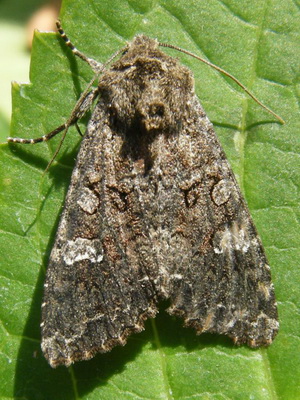
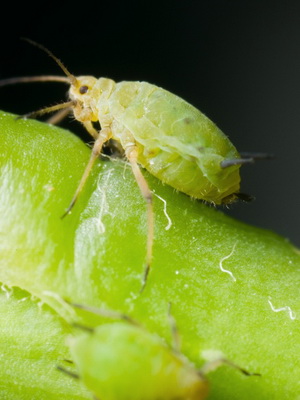
Violas are sometimes affected by pests such as scoops and aphids, so certain measures should be taken in time to protect the plant.
In order to properly handle the perennial garden violet bushes without injuring them when planting and leaving, you can see a photo with a sequence of actions:
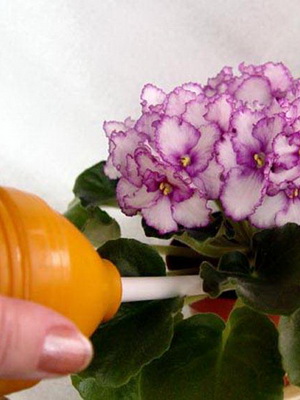
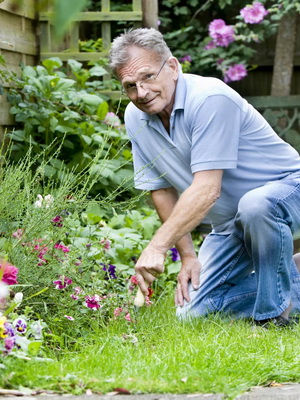
Street perennial violets in garden compositions
Any of the above can be attributed to this type of viola, since all violets grow without much whim in the open field. Their root system is located in such a way that they quickly germinate in loose soil. Such a flower can be a good addition or even a highlight of any composition. Balconies, flower beds, designer slides are decorated with street violets. Various design options for flower beds with street violets can be seen in the photo:


Violets are very plastic and unassuming in growing conditions. They can be grown both in the sun and in shaded areas. This allows you to create clearings from violets under tree crowns among other spring plants. In a garden, perennial street violet is widely used to decorate borders, alpine slides and flower beds. They can be planted with a luxurious carpet between trees and near artificial reservoirs.


Take a look at the photo of flowers growing by the street violet pond, the variety of shades forms a delightful carpet and complements the landscape design of the resting place.

The violet labrador has purple leaves and lilac flowers. It can be planted next to plants that have silvery or yellow leaves.
The contrast is pleasing to the eye. How can you arrange a garden violet in a flower garden so that it sparkles with all the colors, look at the photo:
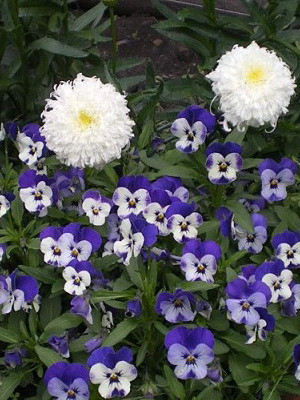


Horned violet, another species actively used in landscape design. It has small peduncles, therefore it is planted in groups.
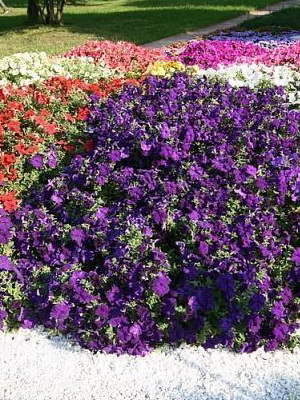
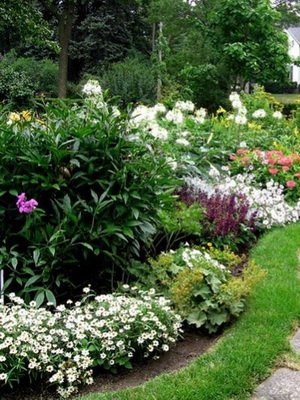
Another feature of it is the short stature of the bushes, therefore, in flower arrangements, it is planted in the foreground. The miniature size made this species a regular on balconies and verandas, it is convenient to use it in portable flower beds and flowerpots.
A successful neighborhood in garden compositions will be:
Taller plants will give the viola the much needed shade on a hot day.
Scented garden violets: varieties of perennial flowers
If you look into the history of the appearance of viola in Europe, then the first mentions begin just with a perennial fragrant garden violet. It was she who was the first to decorate the monastery gardens, and after her the mountain variety of the plant soon appeared. The fragrant garden violet is planted as a perennial crop and is often used in folk medicine as a remedy for severe congestive cough.
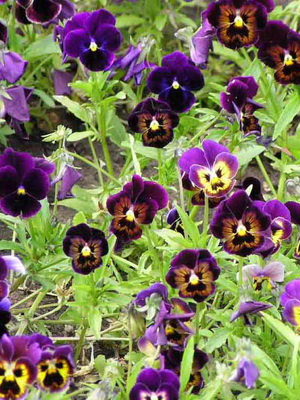
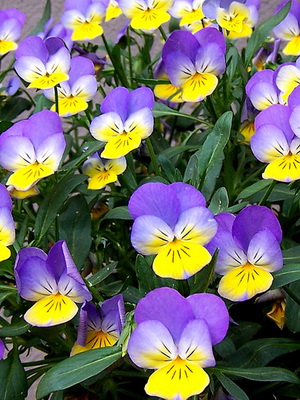
In almost every garden, even a novice amateur florist, you can see how the violet pansies are spreading their petals and bewitching with their tenderness. This flower is one of the types of perennial garden violet. As for the variety in the variety, there are two of the most famous types of this flower:
- viola tricolor (the so-called initial);
- a hybrid of Wittrock (this is a hybrid of a tricolor species and other more wild varieties: Macedonian, morning, subalpine).
It is the second species (hybrid) that is so popular in gardening because of the variety of colors, there is even an extraordinary black hybrid. The disadvantage of all hybrids in general, and this in particular, is the weak resistance to various diseases.
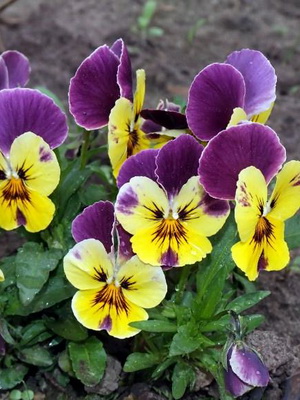
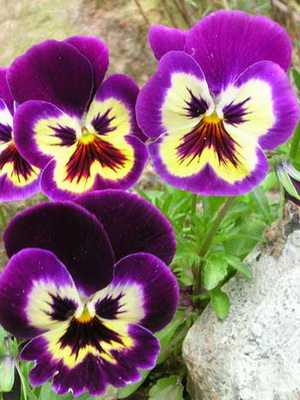
Pay attention to the photo, the flowers of the violet pansies in the lower part of the peduncle are bright yellow, and in the upper part they are purple.
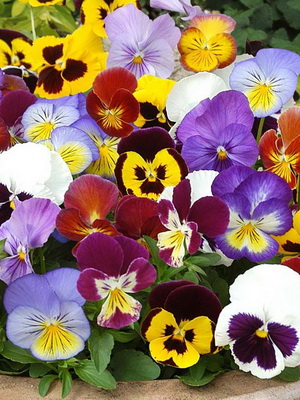
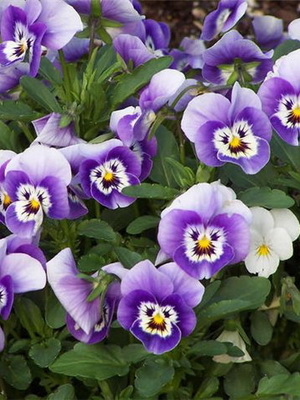
The plant has a very beautiful flowering. Recently, various hybrids of this flower have been bred by breeding, so it can be found in very bright colors and amazing combinations. For example, each petal can be of a different color, or on one of them there are different kinds of dots, streaks, stripes. It looks really beautiful. Look at the photo, how different varieties of pansy flower look:

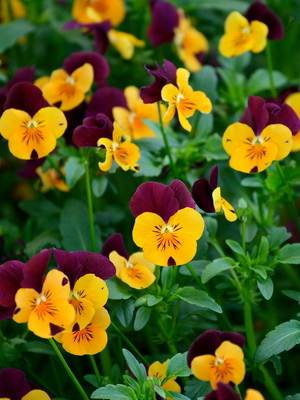
As for the Wittrock variety, he does not have a single classification. There are several of them and each takes into account its own approach:
Difference of variety in size, shape, color:
- bush height (undersized, medium-sized, tall);
- inflorescence size (small flowering and large flowering);
- with a wavy edge (even, slightly wavy, strongly wavy);
- by color (one-color, striped, marble, four-color, multi-colored).
Types depending on the pore of planting, flowering method, color:
- winter varieties (which bloom very early);
- large-flowered (flower diameter up to 10 cm);
- highly wavy and newest varieties (variety series “Swiss Giants”).
Look at the photo for pansies of all known varieties and their names:
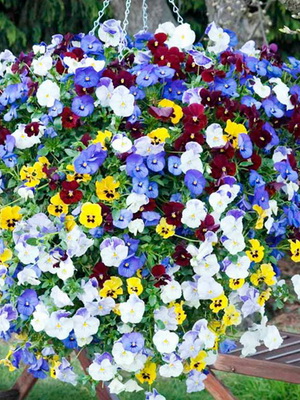



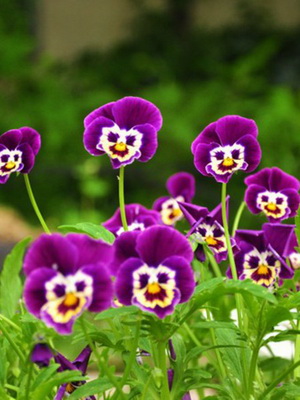
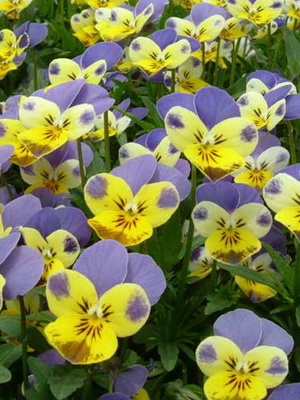
Such a flower can charm anyone. It is not for nothing that for a long time this plant was endowed with magical properties. There is a belief that pansies were used as a means for a love spell. The beauty of these flowers is admired not only by the Slavic peoples, they are popular in different countries. The British, with the help of pansies, confess their feelings to the girls, sending a flower to the chosen one and indicating their name. Inhabitants
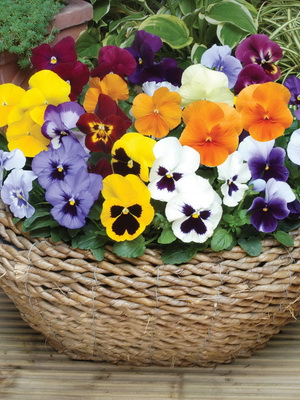
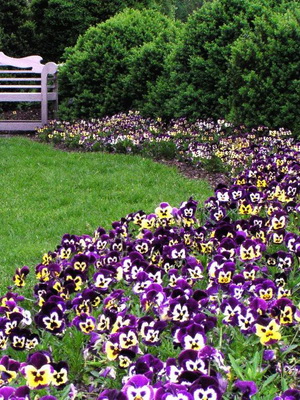
France and Poland use the flower as a symbol of goodbye and parting.
All types of pansies are perennial plant varieties, but most often they are bred as biennials, their inflorescence is similar to a violet. This flower bushes sprawlingly, it grows 15-20 cm in height, the leaves open and stems appear in their axils with a color that reaches 7 cm in diameter.
Take a look at the photo of how a perennial violet looks 3 weeks after planting, if the conditions and care are chosen correctly:
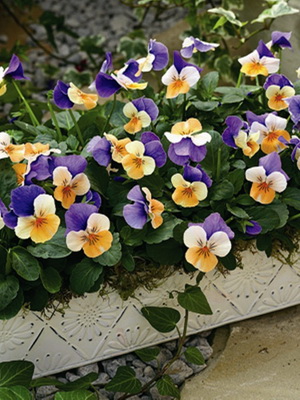

Correct planting of fragrant pansies in open ground
This kind of violet, when planted in the open field and with high-quality care, can please with flowering twice a year. This is very convenient for decorating flower beds or designer flower beds. They bloom in early spring and late autumn, depending on when they were planted. To get flowering in early spring, it is necessary to sow seeds in the summer, that is, six months in advance. If the seeds fall into the ground in May or at the very beginning of summer, then the plants will delight with flowering in the fall.
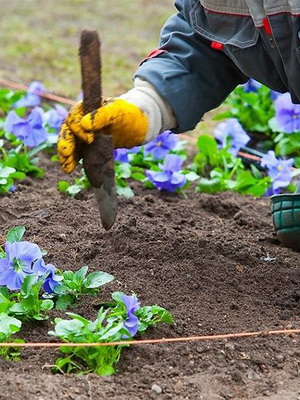

Pansies take root well in the open field, they tolerate wintering well. Of course, if in the fall they were exposed to abundant moisture, and in winter they were not merciful to frost, then freezing is possible. Spring floods can also adversely affect, and under favorable climatic conditions this plant is not particularly whimsical.
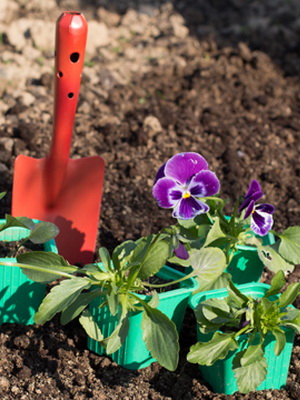
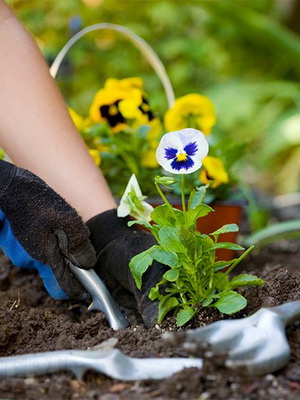
To get good flowering, you need to know how to properly plant pansies in open ground. It should be borne in mind that the land for sowing must be cleared of weeds and well loosened. Therefore, it will be necessary to make beds and place seeds in the holes, avoiding planting density. When planting pansy flowers in open ground, the first shoots should emerge from the ground in a week, or after two, then the seedlings can be thinned out. The distance between the bushes should be about 20 cm. The soil near the bush must be watered and loosened from time to time so that the root system can breathe freely.


With rational moisture and timely treatment from pansy pests, the next spring will quickly grow and please with abundant flowering. Ready-made flowering plants can be used to decorate all kinds of flower beds and compositions. Florists often decorate wedding bouquets or boutonnieres with violets of this kind. Even a novice amateur gardener can plant pansies in prepared open ground, since this flower does not have any special care requirements and takes root everywhere. It is important to remember that if the flower garden is located in a sunny place, then the flowers will be bright and large, if in the shade – a little smaller and paler.

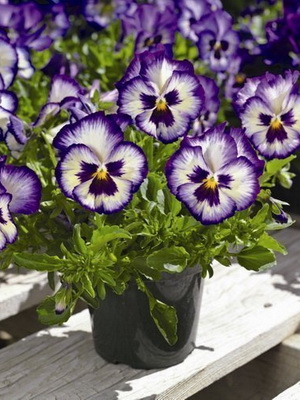
Pansies, regardless of the variety, can be grown both in special greenhouses and in garden conditions in the courtyard of a private house or in the country.
Care when breeding perennial violets
Many violets are not easy to grow through seedlings. At first glance, this is strange, because self-seeding in most species is quite aggressive. The explanation is simple: only fresh seeds germinate well in violets. After storage, they require stratification.
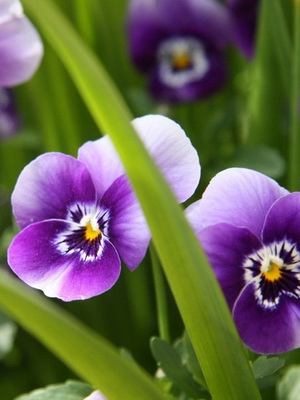
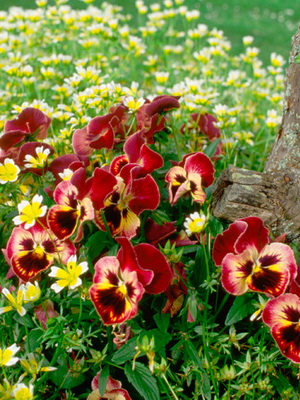
The quantity and quality of flowering can be adjusted by choosing the sowing time and the characteristics of lighting and heating. It is also important to remember that frequent ingress of water on the leaves can provoke rotting, so it is better to water it from below, using a tray, or soak the soil under a growing flower.


A perennial garden violet does not require spraying when planting and caring for it, but moist air for it, like for most plants, is necessary. To satisfy this need, it is enough to put a small container of water next to the flowerpot. If the plant is outdoors, then more often spray the surrounding area or neighboring plants to provide the necessary moisture level on hot days (approximately 50%).


It must be remembered that violets, although not whimsical plants, are afraid of drafts. This is especially true for flowers that are in the room. And street copies are also better placed in a cozy place.
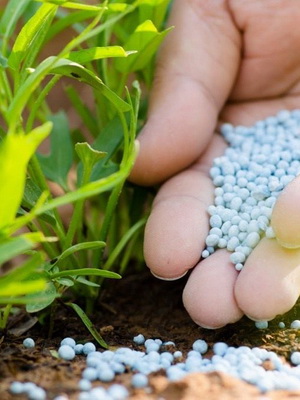

Fertilizer plays an important role in the cultivation of viols. Now there are many different solutions that you can add when watering, or treat the roots with them when planting a plant in the soil. To choose a good fertilizer for violets, you need to focus on the agent for flowering plants. You need to process the plant, following the instructions and dosage indicated by the manufacturer.
How not to make a mistake when buying violets
When the choice fell on a violet for growing flowers at home, then you need to know how not to make a mistake when buying.
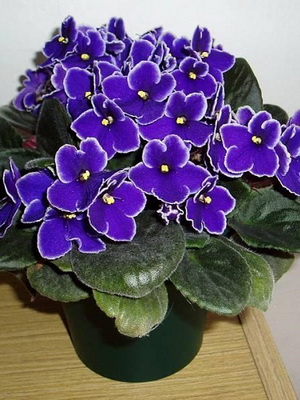

Of course, to purchase seeds, you can explore the assortment offered by various stores. In this case, you need to pay attention to the expiration date and the manufacturer. It would be nice to first read reviews of a similar product on the Internet. You can also heed the advice of experienced friends or florists. But the best option would be to purchase these seeds from people who are breeding viols. In most cases, they take a responsible approach to collecting seeds, which will give good flowering in the future.
If you decide to buy ready-made violets in a flowerpot, then you can use the following tips:
- The plant should have dense leaves, no spots.
- The ends of the leaves should not be dry.
- Lethargy should not be present.
- The violet should be in bloom.
- There should be no smell of rot or delight from the soil.
Choosing the right violet for the interior, you also need to take into account some features:
- Color combination.
- The size of the flowerpot and the outlet itself.
- Lighting of the intended place (the pale flower will become even paler if it stands where there is little light).
- If the walls of the room are dark in color, then the flower should be lighter and brighter.
- The color and style of the flowerpot also needs to be considered.
Perennial violets can be selected in the photo below:

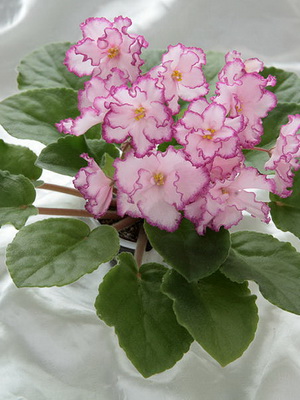


Viola of any kind can successfully blend into a variety of interiors. These flowers look equally harmonious both outdoors and indoors. The main thing will be determined where is the most suitable place for their placement.

